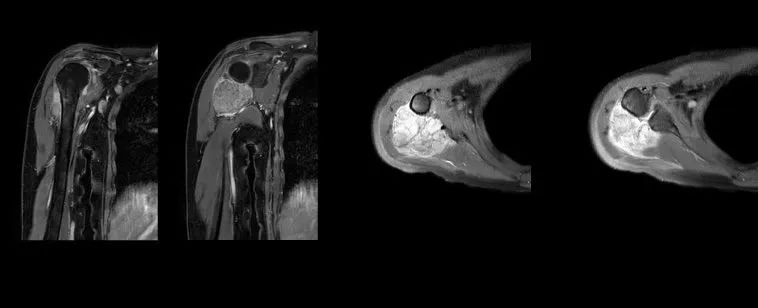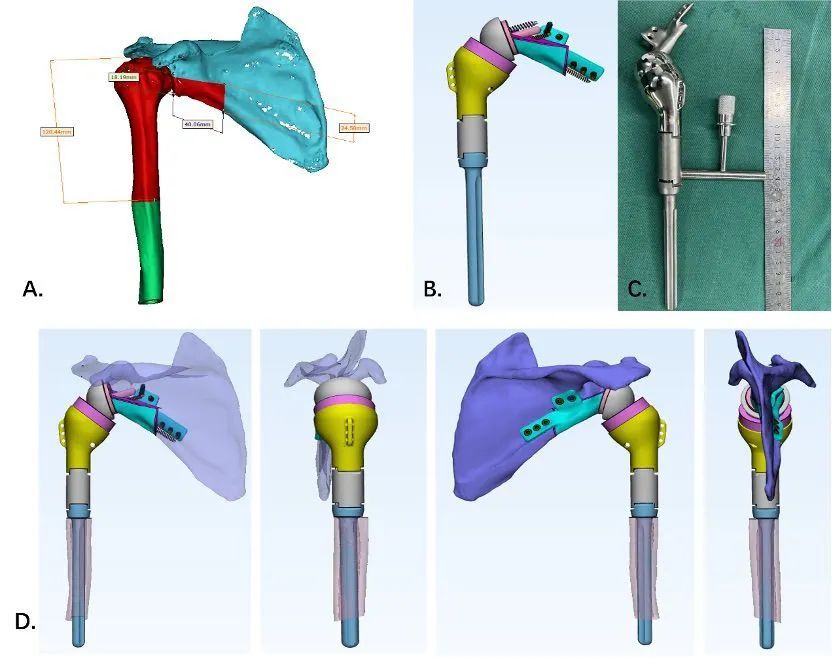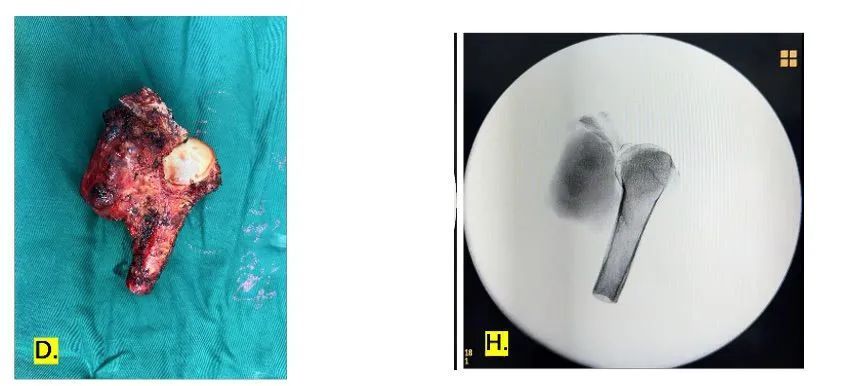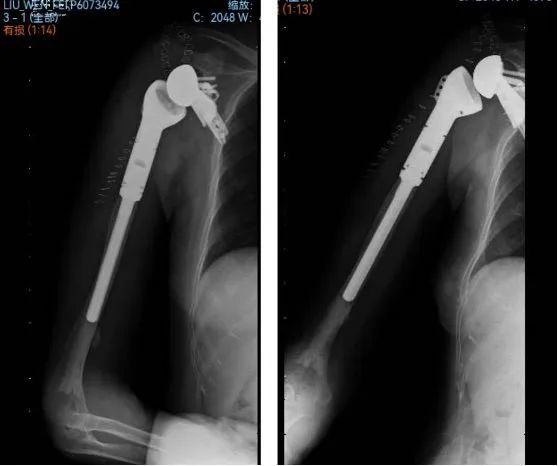It is reported that the Orthopedics and Tumor Department of Wuhan Union Hospital has completed the first “3D-printed personalized reverse shoulder arthroplasty with hemi-scapula reconstruction” surgery. The successful operation marks a new height in the hospital’s shoulder joint tumor resection and reconstruction technology, bringing good news to patients with difficult cases.
Aunt Liu, 56 years old this year, had right shoulder pain several years ago. It has significantly worsened over the past 4 months, especially at night. The local hospital found “right humeral cortical side tumor lesions” on the film. She came to the Orthopedics and Tumor Department of Wuhan Union Hospital for treatment. After Professor Liu Jianxiang’s team received the patient, shoulder joint CT and MR examinations were performed, and the tumor involved the proximal humerus and scapula, with a wide range. First, local puncture biopsy was performed for the patient, and the pathological diagnosis was confirmed as “biphasic synovial sarcoma of the right shoulder”. Considering that the tumor is a malignant tumor and the patient currently has a single focus in the whole body, the team formulated an individualized treatment plan for the patient-complete removal of the proximal end of the humerus and half of the scapula, and 3D-printed artificial reverse shoulder joint replacement. The aim is to achieve tumor resection and prosthesis reconstruction, thereby restoring the patient’s normal shoulder joint structure and function.

After communicating the patient’s condition, treatment plan, and expected therapeutic effects with the patient and their family, and obtaining their consent, the team began to prepare for the patient’s surgery intensively. In order to ensure complete tumor resection, half of the scapula needs to be removed in this operation, and the reconstruction of the shoulder joint is a difficult point. After careful review of the films, physical examination, and discussion, Professor Liu Jianxiang, Dr. Zhao Lei, and Dr. Zhong Binlong formulated a detailed surgical plan and discussed the design and processing of the prosthesis with the engineer many times. They simulated tumor osteotomy and prosthesis installation on a 3D printed model, creating a “private customization” for the patient – an artificial reverse shoulder joint prosthesis that matches their autologous bones in a 1:1 ratio.

A.Measure the range of osteotomy. B. Design the 3D prosthesis. C. 3D print the prosthesis. D. Pre-install the prosthesis.
The reverse shoulder joint is different from traditional artificial shoulder joint, with the spherical joint surface placed on the scapular side of the glenoid and the cup placed on the proximal half-restricted humerus in the semi-restrictive total shoulder joint prosthesis. This surgery has the following advantages: 1. It can highly match the large bone defects caused by tumor resection; 2. The pre-made ligament reconstruction holes can fix the surrounding soft tissue and avoid joint instability caused by rotator cuff resection; 3. The bio-mimetic trabecular structure on the surface of the prosthesis can promote the ingrowth of surrounding bone and soft tissue; 4. The personalized reverse shoulder joint can effectively reduce the postoperative dislocation rate of the prosthesis. Unlike conventional reverse shoulder replacement, this surgery also requires the removal of the entire humeral head and half of the scapular cup, and reconstruction of the humeral head and scapular cup as a whole block, which requires precise design and superb surgical technique.
After careful planning and preparation during the perioperative period, the surgery was successfully performed on the patient recently, under the direction of Professor Liu Jianxiang. The team worked closely together and carried out precise operations to complete the complete removal of the tumor, accurate osteotomy of the humerus and scapula, installation and assembly of the artificial prosthesis, which took 2 hours to complete.

D: Precisely cut off the entire humerus and scapula with the bone-cutting guide plate to remove the tumor (H: Intraoperative fluoroscopy for tumor removal)
Postoperatively, the patient’s condition was good, and they were able to move with the aid of a brace on the affected limb on the second day and perform passive shoulder joint movements. Follow-up X-rays showed good positioning of the shoulder joint prosthesis and good functional recovery.

The present surgery is the first case in Wuhan Union Hospital Department of Orthopedics that adopts 3D printed cutting guide and personalized prostheses for customized reverse shoulder joint and hemi-scapula replacement. The successful implementation of this technology will bring limb-saving hope to more patients with shoulder tumors, and benefit a large number of patients.
Post time: Apr-28-2023










